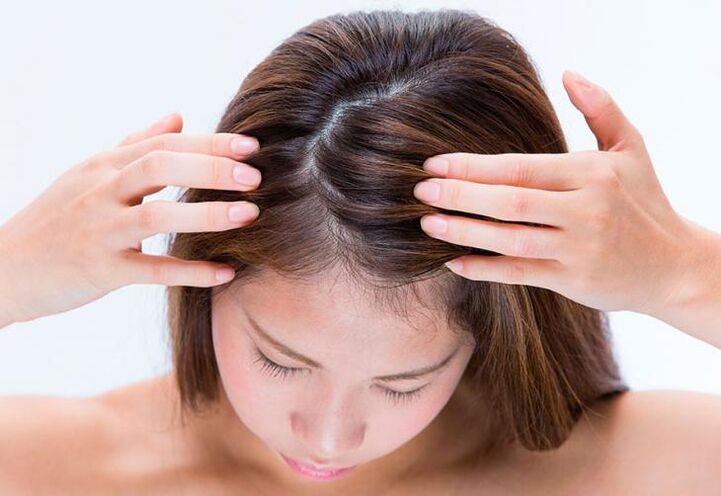Psoriasis (from Greek "psora" - "skin disease, veil") is a non -chronic disease. The lichen scale (so they also call psoriasis) affects the skin area of the elbows and knees, on the head and at the bottom. But there are also psoriasis nails, joints and external genitals, but these forms are extremely rare.
The cause of psoriasis

The disease is caused by a short life cycle. The fact is that in healthy people, skin cells are updated every 30 days, which is their distribution cycle and cooking within 4 weeks. Psoriasis is, one may say, the abnormal reaction of the body to various types of external stimuli, as a result in some places the upper layer of the skin is dead in just 4-5 days, leaving the keratinized area.
To date, psoriasis is considered a variety of diseases, the disease based on a set of causes: immunological transitions, metabolic disorders, various neurological and endocrine disorders.
The exact reason why a person has psoriasis is not finally established. There are several theories in this regard. According to one of them, two types of psoriasis are distinguished:
- The cause of type I is inherited by the breakdown of the immune system. This form of the disease, which affects the skin, is about 65% of people, and most often 18 to 25 years old;
- II Types of psoriasis appear in people over the age of 40, they are not inherited and are not associated with violations in the cells of the immune system. Unlike the first type, the second includes nail psoriasis and joints.
According to other theories, psoriasis occurs solely due to affected immunity, causes that may be contagious, stress, alcoholic beverages, food deficiency, cold climate. Clamps, peppers and foods containing vinegar can cause severity and psoriasis to worsen. Psoriasis, according to this theory, is a systemic disease. And this means that with a serious impaired immune system, the process can spread from the skin to other tissues and organs, for example, to the joints, as a result psoriatic arthritis develops.
Symptoms of psoriasis
Symptoms of psoriasis scalp, knees, elbow joints and lower backs are peeling red or pink papules. They are covered with a silver scale (thus the name "Scaly Lichen"), which, when combed with easily disappear. Over time, spots -spots increase in size, combine into large formations (plaques) and affect larger and larger areas, and damaged and bleeding skin.
Nail psoriasis is shown slightly different. First, dark nail plates, spots and points appear on them. Usually with psoriasis, nails thick and collapse.
Symptoms of psoriasis in the form of rash are accompanied by severe itching, especially in papules, but they apply to nearby areas.
Depending on the seasonal enlargement, three types of psoriasis are distinguished: summer, winter and uncertain. Often, winter types are found - symptoms under the influence of sunlight, and sometimes disappear altogether. In patients with summer forms, on the contrary, the disease worsens under the influence of the sun.
Psoriasis treatment
The treatment of psoriasis, depending on its type, is carried out by various drugs and methods. In any case, therapy should be complex.
Psoriasis drug treatment at the progressive stage usually includes:
- Antihistamines;
- Hypensesbibing drugs;
- Vitamins A, C, B6, B12;
- Sedative;
- External funds.
At the psoriasis stage, autohemotherapy (method of treatment with your own blood), antiphagin or anatoxin injection (with the presence of chronic infection focus), as well as ultraviolet irradiation are indicated. For external use, ichthyol, sulfuric ointment with tar, as well as naphthalane with the addition of corticosteroids, prescribed.
Often, the scalp psoriasis and other parts of the body are treated with lasers. Lazer rays activate the molecules of living fabrics, giving mechanical positive effects, photochemicals and more.

For the treatment of severe forms of psoriasis, photo chemotherapy is used, which shows the effect of long wave UV rays and the use of special medicines. Thanks to photochemotherapy, you can get rid of about 80% plaque, and with regular use -about 95%. In severe diseases, taking corticosteroid hormones and cytotoxic immunosuppressants are indicated.
Also for the treatment of psoriasis, radiotherapy, ultrasound, ultrafonophoresis, electrotherapy, cryotherapy, magnetic waves, thalassotherapy, plasmosorption, and hemoruscation are used.
All patients show a diet with carbohydrate and animal fat limitations, except for acute and alcohol dishes. Also, patients with psoriasis are recommended by resort treatment - sea bath, sunburn, radon and hydrogen sulfide springs.
Psoriasis treatment with folk remedies
People's recipes also help eliminate the symptoms of psoriasis. However, it should be noted that the cause of the disease may occur in the immune system and that the immunity is affected by chronic disease. For this reason, the treatment of psoriasis with folk remedies, first, should be agreed with the attending physician, and, second, only to complete the basic therapy. Ignorance or improper treatment of serious illness is full of its transition to severe form, characterized by damage to the joints. They will start to swell, lose mobility and pain. In addition, psoriasis reduces the standard of life of a person who complains about emotional and psychological state instability.
So, popular recipes:
- Black flower and elderberry leaves: 2 teaspoons. The raw material pours 0. Strain the stew, take 1/3 cup three times a day;
- Buckthorn sea oil: Take 1 teaspoon in it. once a day;
- Mustard ointment: Mix 1/2 teaspoon. Dry mustard, 5 tablespoons. St John's Wort hot milk, 1 teaspoon of liquid butter. Put the mixture in the affected area, after a few minutes washed with cold water, using a moisturizer. Perform the procedure once a week.
It is very useful for bathing psoriasis with the addition of series absorption, celandine, st. John, FIR Extract and Sage.
Unfortunately, at this time it is impossible to cure psoriasis, relapse can occur at any time, so people with such a diagnosis should always be observed by a dermatologist.























